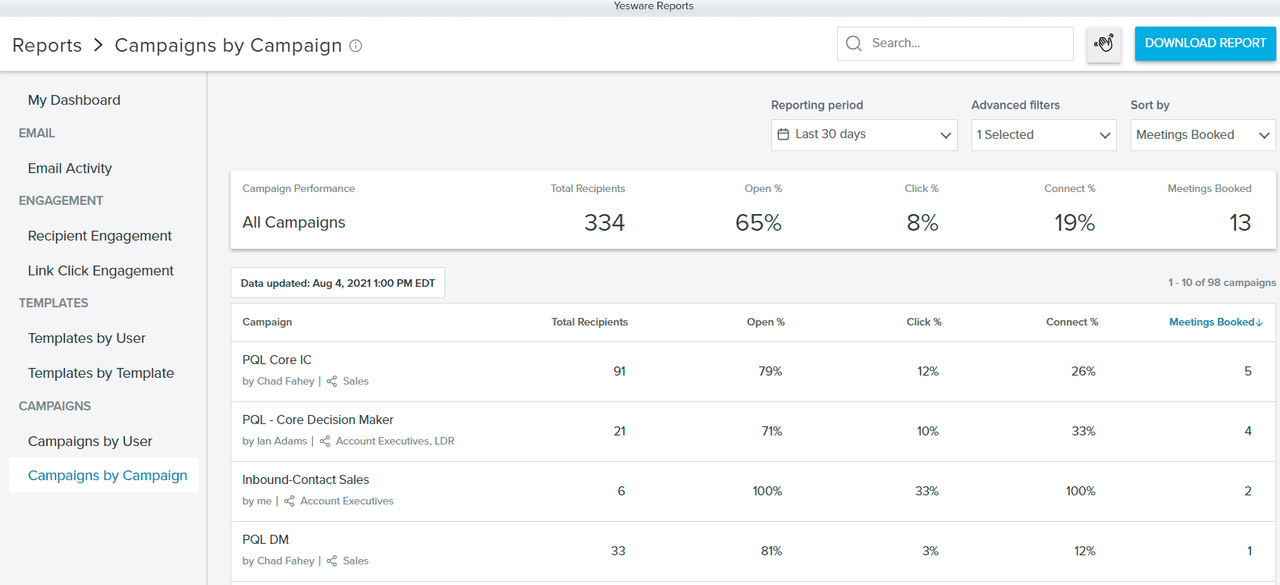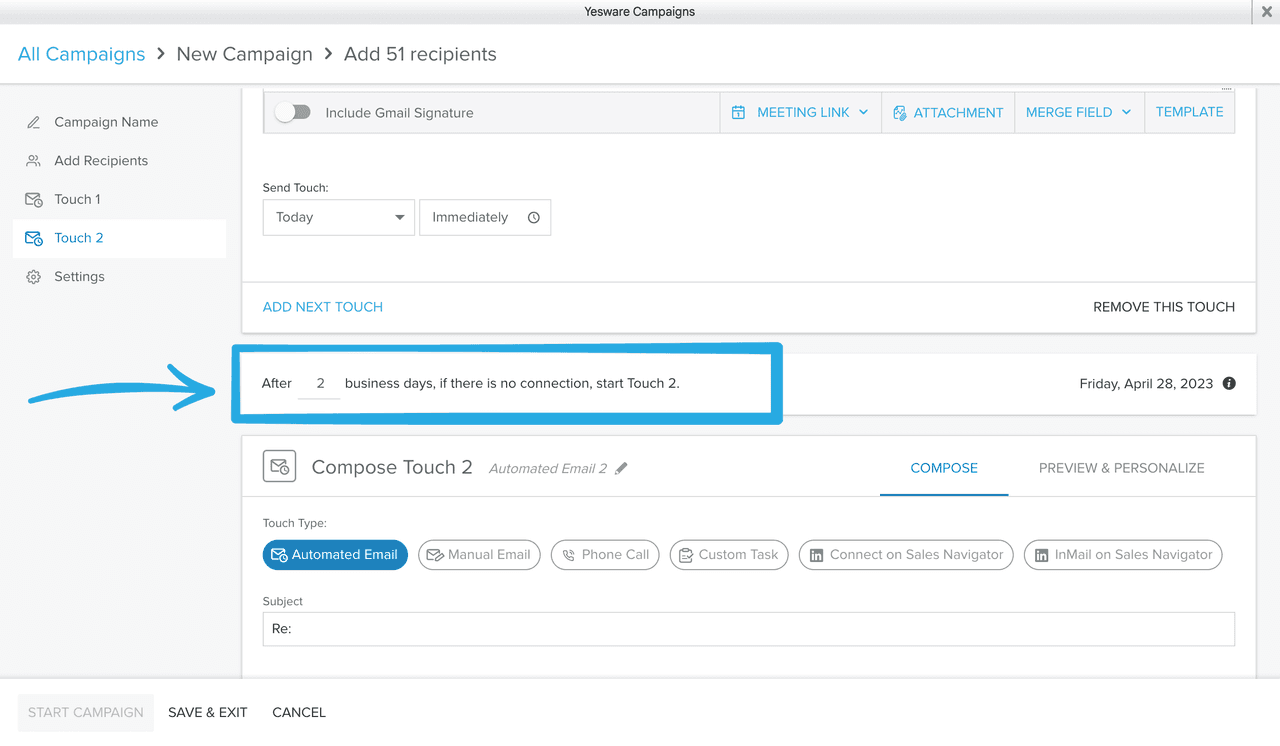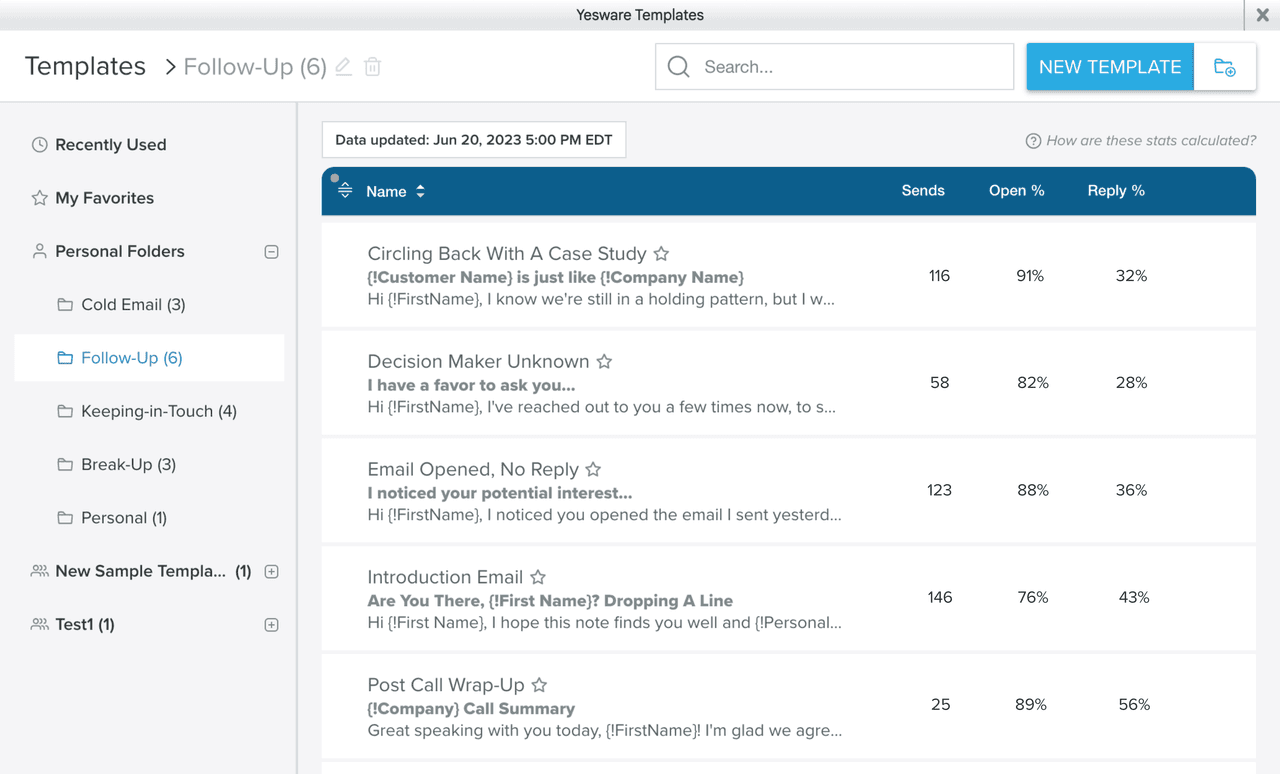Lead Management: A Comprehensive Guide for Sales Professionals
Anya Vitko
Contents
- What Is Lead Management?
- The Lead Management Process: A Step-by-Step Breakdown
- Best Practices for Effective Lead Management
- Common Lead Management Challenges and Solutions
- Choosing the Right Lead Management Software
- The Future of Lead Management: Trends and Predictions
- Successful Lead Management in Action
- Maximizing Your Sales Potential with Effective Lead Management
According to Gartner’s 2024 Leadership Vision for CSOs, AI will provide significant time savings to sellers. The report predicts that by 2026, generative AI will help sales teams save 50% of the time they usually spend on meeting preparation.
With so much more free time on their hands, sales professionals can focus on incorporating best practices for lead management into their workflows. Stay tuned to explore these strategies in this article, and get ready for some tips on choosing a lead management software that would be a perfect fit for your sales team.
Here’s what we will cover:
- What Is Lead Management?
- The Lead Management Process: A Step-by-Step Breakdown
- Best Practices for Effective Lead Management
- Common Lead Management Challenges and Solutions
- Choosing the Right Lead Management Software
- The Future of Lead Management: Trends and Predictions
- Successful Lead Management in Action
- Maximizing Your Sales Potential with Effective Lead Management
What Is Lead Management?
Lead management is the systematic process of capturing, tracking, and nurturing potential customers (leads) throughout the sales cycle until they convert into paying customers.
Lead management ensures that no potential customer slips through the cracks. In a competitive market, effectively managing leads can be the difference between closing a deal and losing it to a competitor. By organizing and prioritizing leads, sales teams can focus their efforts on the most promising prospects.
A well-structured lead management system allows sales teams to track interactions with leads, personalize follow-ups, and maintain consistent communication.
Research by the Harvard Business Review tells us that companies that excel in lead management generate 50% more sales-ready leads at a 33% lower cost. This statistic highlights the direct impact of effective lead management on revenue.
The Lead Management Process: A Step-by-Step Breakdown
Let’s assume that your company differentiates between demand generation vs. lead generation and that your marketing department has successfully boosted demand for your offerings through a combination of content marketing, paid advertising, social media marketing, and SEO.
1. Lead Capture
Generating and capturing leads is the first step in the lead management process.
Leads are those individuals who fit your Ideal Customer Profile (ICP), meaning that based on the first-party or third-party lead data you have on them, they are likely to show interest in your company’s products and services.  There’s a wide variety of methods for generating leads, such as content marketing, social media campaigns, paid advertising, webinars, email marketing, referral marketing, and more.
There’s a wide variety of methods for generating leads, such as content marketing, social media campaigns, paid advertising, webinars, email marketing, referral marketing, and more.
All together, these methods constitute a multichannel approach to lead generation. A multichannel approach is essential to reach a broader audience and ensure that potential leads are captured from diverse sources.
For instance, combining email marketing with social media outreach can significantly increase your lead pool.
Tip: You can enhance your sales team’s lead capture by leveraging tools like Yesware’s automated email campaigns for cold outreach and Prospector for data enrichment.

2. Lead Tracking and Scoring
Once leads are captured, tracking and scoring them is the next step.
Lead scoring is the process of assigning points to each lead based on specific criteria, such as demographic information, engagement level, and behavior.  For example, a lead that frequently interacts with your emails or visits key pages on your website, such as Services or Pricing, might be scored higher than one with minimal engagement.
For example, a lead that frequently interacts with your emails or visits key pages on your website, such as Services or Pricing, might be scored higher than one with minimal engagement.
Behavior-based tracking, like monitoring how prospects engage with your content, allows you to understand their needs and intent better. Yesware’s analytics features make this process easier by providing detailed insights into lead behavior, helping you accurately score leads and determine their readiness for the next step.

Tip: Yesware’s email tracking can provide insights into how prospects interact with your emails. You can refine your messaging by knowing which emails get the highest open rates. With this knowledge, you can also prioritize follow-up actions effectively.
![]()
3. Lead Qualification
Once you have assigned scores to your leads, the next step is to divide them into two groups: Marketing Qualified Leads (MQLs) and Sales Qualified Leads (SQLs). MQLs are leads that have shown interest but may not be ready to buy yet, while SQLs are more likely to convert.  A BANT framework that takes budget, authority, need, and timing into account is helpful in determining which group a lead falls into.
A BANT framework that takes budget, authority, need, and timing into account is helpful in determining which group a lead falls into.  In B2B sales, purchasing decisions are usually made by groups of individuals, so it’s important to gather information about each of the decision-makers.
In B2B sales, purchasing decisions are usually made by groups of individuals, so it’s important to gather information about each of the decision-makers.
Yesware’s Prospector provides visibility into job titles and seniority levels that can help gauge leads’ authority. It also gives access to LinkedIn profiles, enabling salespeople to assess the leads’ needs and the time frame in which they hope to make the purchasing decision.
Let’s look at an example: If a company that provides cloud services is hiring software engineers on LinkedIn and your company happens to sell software development tools, your products could be relevant to the cloud service provider.
4. Lead Distribution
Lead distribution is the process of assigning prospects to salespeople depending on the lead routing rules in your company.
Here are some common lead routing rules:
Round-Robin Routing
This approach distributes leads among available sales representatives in a rotating manner. Once a lead is assigned to a rep, the next lead goes to the next rep in line. This approach is best suited for sales teams with similar skill levels or those sales teams that don’t have to work with distinct client segments.
Geographic Routing
In this model, leads are assigned based on the geographic location of the prospect, and sales reps are typically responsible for specific regions or territories.
Skills-Based Routing
Sales reps handle different audience segments based on their specific skills, expertise, or experience with particular industries, products, or customer types. This approach is best for organizations that have specialized sales teams or where certain reps have unique qualifications.
Time-Based Routing
Leads are distributed based on the availability or time zone of sales reps. For example, leads that come in after hours might be routed to reps in a different time zone. This model is perfect for global sales teams or companies that need to provide 24/7 sales coverage.
Value-Based Routing
High-value leads (e.g., large potential deals) are routed to the most experienced or highest-performing sales reps, while lower-value leads might go to less experienced reps.
Company Size-Based Routing
Leads are assigned based on the size of the prospect’s company, often measured by revenue, employee count, or market presence. This routing model is most appropriate for sales teams that specialize in selling to different market segments like SMBs, mid-market, or enterprise clients.
Product/Service-Based Routing
Sales reps who specialize in particular offerings receive leads relevant to their expertise. Companies with a diverse product or service portfolio where reps focus on specific areas may benefit from this approach.
5. Lead Nurturing
Lead nurturing is about building relationships with leads over time through personalized and consistent communication. Personalized communication, such as tailored emails and content recommendations, helps keep your brand top-of-mind and moves leads further down the sales funnel.
Drip campaigns are an effective strategy for nurturing leads. Tools like Yesware’s email campaigns allow you to set up automated sequences that deliver the right content at the right time based on the lead’s behavior and engagement.
Best Practices for Effective Lead Management
Data Hygiene and Maintenance
Maintaining clean, accurate data is non-negotiable for effective lead management. Poor data hygiene can lead to missed opportunities, wasted resources, and inaccurate sales forecasting.
According to recent 2022 research by Experian, data quality improvements empower businesses to exceed their annual goals. This is a no-brainer since poor-quality data may have negative effects on the customer experience.
As part of the best practices in sales pipeline management, sales teams should regularly audit their sales pipelines to remove duplicates, outdated contacts, and incorrect information. Data validation tools can automatically verify and clean new data entries.
Tip: Yesware is a sales engagement tool that prioritizes data quality. When collecting lead data, Yesware cross-checks information across various sources to ensure accuracy and reliability. 
Aligning Sales and Marketing Teams
Statistics tell us that companies with strong sales and marketing alignment achieve 20% annual revenue growth, compared to a 4% decline in companies with poor alignment.
To make sure both teams work in tandem, establish shared goals and KPIs for both teams to ensure they are working towards the same objectives. It’s also important to implement regular cross-functional meetings to discuss lead quality and marketing campaign performance.
A shared CRM platform that allows both teams to access and update lead information can also be a tremendous help.
Tip: Yesware’s email and attachment tracking provides insights into which emails generate high-quality leads. This enables sales and marketing teams to collaborate more effectively.
![]()
Continuous Process Optimization
Lead management is not a one-size-fits-all process. It is a good idea to regularly ask for feedback from your sales teams to see what their biggest challenges with lead management are.
A sales pipeline dashboard can provide valuable insights into your sales process, helping you track progress and identify bottlenecks.
Also, you may want to experiment with different lead nurturing tactics, such as personalized email campaigns or targeted content offers, and measure their effectiveness to see what approach works best for your target audience.
A/B testing allows you to experiment with different communication strategies and optimize your lead management process based on real-time data. According to a review by Jeremie C., A/B testing with Yesware helped them boost the conversion rate from 12% to 26%.  Grab more sales best practices and data-driven insights here:
Grab more sales best practices and data-driven insights here:
 Sales Engagement Data Trends from 3+ Million Sales ActivitiesLooking at millions of tracked email activity over the past few years, this ebook is filled with our top studies and findings to help sales teams accelerate results.
Sales Engagement Data Trends from 3+ Million Sales ActivitiesLooking at millions of tracked email activity over the past few years, this ebook is filled with our top studies and findings to help sales teams accelerate results.Common Lead Management Challenges and Solutions
An influx of leads can overwhelm your sales team, leading to delayed follow-ups and missed opportunities.
According to research, conversion rates jump more than eight times if the first contact is attempted in the first five minutes after the lead demonstrates an interest in a company. Leverage AI to automate follow-up processes to ensure timely responses.
Consistent follow-ups are equally important for nurturing leads, but it’s easy for reps to lose track of where each lead is in the process. 
Tools can be very helpful here to ensure nothing slips through the cracks.
With Yesware, you can schedule your follow-ups to send automatically after a certain number of days if the recipient doesn’t respond or book a meeting.

Yesware also helps you segment your leads based on their engagement level and tailor your follow-up strategy accordingly.
Measuring the ROI of your lead management efforts can be challenging, especially if you’re using multiple tools and channels. Use integrated analytics tools that track the performance of your lead management strategies across all channels, such as follow-up email templates. Regularly review these metrics to understand which tactics are driving the most revenue.

Tip: To maximize your chances of conversion, learn how quickly you should contact inbound leads and why speed matters in lead response.
Choosing the Right Lead Management Software
When evaluating lead management software, there are several essential features that every tool should offer to maximize the efficiency of your sales team:
- Customizable lead-scoring features that allow you to set criteria based on your ICP and sales process.
- Automated lead distribution based on predefined rules such as territory, round-robin distribution, or lead score.
- Leads are captured from various sources, including websites, social media, email campaigns, and webinars.
- Customizable sales dashboards and reports to monitor lead conversion rates, sales pipeline health, and other key metrics.
- Seamless integration with your CRM system allows you to maintain a single source of truth for all lead and customer data.
The Future of Lead Management: Trends and Predictions
According to Gartner, by 2028, more than half of B2B sales will be conducted through conversational user interfaces. Conversational UIs are AI-powered chatbots or voice assistants that engage with leads, prospects, and customers.
The predicted rise in the use of AI in sales will make collecting first-party data about leads all the more important to ensure AI has enough information to deliver the most effective responses.
Account-based marketing (ABM) is gaining traction as companies shift from traditional lead-generation strategies to a more targeted, account-centric approach. Salespeople will need to be more strategic in their outreach, focusing on building relationships with key stakeholders within target accounts. Equip your team with the best B2B sales tools to improve efficiency and close more deals faster.
Explore the latest innovations in sales tech to stay ahead of the competition and streamline your sales processes.
Successful Lead Management in Action
According to a case study, Tassal, Australia’s largest producer and distributor of Tasmanian-grown Atlantic salmon, didn’t have their sales engagement data organized in one place. This became a significant challenge when Tassal’s sales team started expanding.
Opting for a CRM for lead management helped Tassal increase the efficiency of their sales reps with the help of regular task reminders. It also improved the onboarding of new team members by providing a highly automated and user-friendly sales pipeline for generating, enriching, distributing, nurturing, and converting leads.
Maximizing Your Sales Potential with Effective Lead Management
Boost your team’s efficiency with the right sales productivity tools, ensuring your team members can focus on what matters most—closing deals.
If you are looking for a cost-effective solution to optimize your lead management strategies, Yesware’s features—Prospector for data enrichment and automated email campaigns for lead capture, qualification, and nurturing—can help. Sign up to try Yesware for free!
Get sales tips and strategies delivered straight to your inbox.
Yesware will help you generate more sales right from your inbox. Try our Outlook add-on or Gmail Chrome extension for free, forever!
Related Articles
Casey O'Connor
Casey O'Connor
Casey O'Connor
Sales, deal management, and communication tips for your inbox

